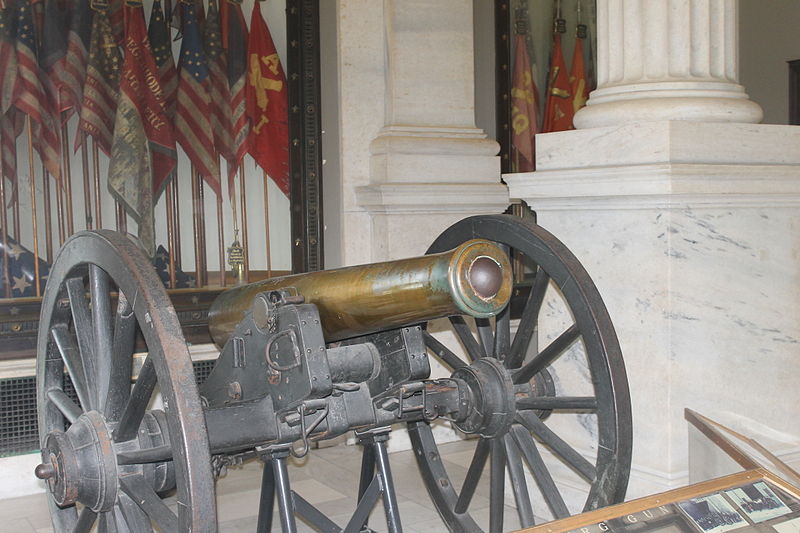
During the Battle of Gettysburg, Battery B of the 1st Rhode Island Light Artillery were loading a Napoleon cannon when a Confederate shell scored a direct hit on the muzzle, killing two men. Corporal James Dye and Sergeant Albert Straight tried to force another round into the tube with a rammer and an ax, but the ball remained lodged in the dented muzzle until a second Confederate shell struck the cannon’s wheel, putting it out of commission. The spiked gun now stands in the Rhode Island statehouse in Providence.
Even more impressive, in the same battle Captain Hubert Dilger, commander of the 1st Ohio’s guns, personally sighted a shot that seemed to have no effect on its target, an enemy cannon. Only when he sighted it through field glasses did he realize what he’d done: “I have spiked a gun for them, plugging it at the muzzle.”
“It would be hard to calculate the odds of such an occurrence happening,” writes Michael Sanders in More Strange Tales of the Civil War. “Just hitting a gun with a ball would be considered a great shot. This would be equivalent to Robin Hood splitting an arrow with another arrow. Captain Dilger could truly say that he could never do that again even if he tried.”
